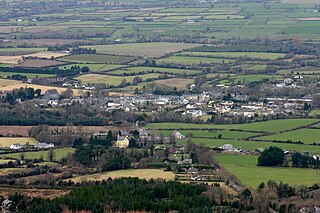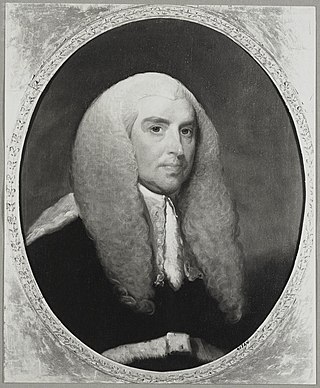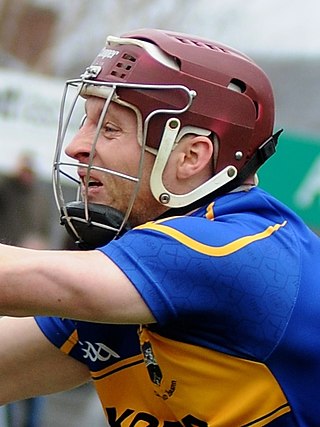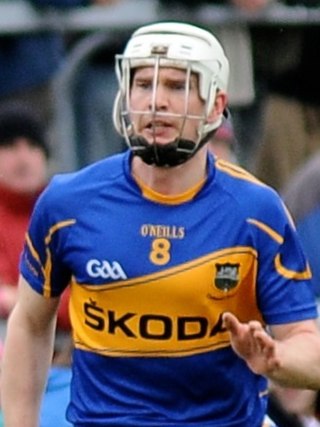The Whiteboys were a secret Irish agrarian organisation in 18th-century Ireland which defended tenant-farmer land-rights for subsistence farming. Their name derives from the white smocks that members wore in their nighttime raids. Because they levelled fences at night, they were usually called "Levellers" by the authorities, and by themselves "Queen Sive Oultagh's children", "fairies", or followers of "Johanna Meskill" or "Sheila Meskill". They sought to address rack-rents, tithe-collection, excessive priests' dues, evictions, and other oppressive acts. As a result, they targeted landlords and tithe collectors. Over time, Whiteboyism became a general term for rural violence connected to secret societies. Because of this generalization, the historical record of the Whiteboys as a specific organisation is unclear. Three major outbreaks of Whiteboyism occurred: in 1761–1764, 1770–1776, and 1784–1786.

Ribbonism, whose supporters were usually called Ribbonmen, was a 19th-century popular movement of poor Catholics in Ireland. The movement was also known as Ribandism. The Ribbonmen were active against landlords and their agents, and opposed "Orangeism", the ideology of the Protestant Orange Order.
The All-Ireland Senior Hurling Championship had many winners and losers located around Ireland.

Clogheen is a village in County Tipperary, Ireland. The census of 2016 recorded the population at 478 people.
Wayne Sherlock is an Irish retired hurler who played for Cork Senior Championship club Blackrock. He played for the Cork senior hurling team for 8 seasons, starting as a right wing-back before later lining out as a right corner-back. Sherlock is considered to be one of the greatest defenders of his era.

Hugh Carleton MRIA, 1st Viscount Carleton, PC (I), SL was an Irish politician and judge.

Father Nicholas Sheehy (1728–1766) was an 18th-century Irish Roman Catholic priest who was executed on the charge of being an accessory to murder. Father Sheehy was a prominent and vocal opponent of the Penal Laws, which subjected the whole Catholic Church in Ireland to religious persecution, and as a vocal activist for Catholic Emancipation. His conviction was widely regarded as a judicial murder and was cited long afterwards as Irish jargon for a miscarriage of justice. Fr. Nicholas Sheehy is currently regarded as one of the Irish Catholic Martyrs.
Jamesy Kelleher was an Irish hurler who played as a full-back for the Cork senior team.
Jeremiah "Jer" Doheny was an Irish hurler who played as a right corner-forward for the Kilkenny senior team. He was captain for Kilkenny's first All Ireland victory in 1904.
James Finn is an Irish retired hurler who played as a right wing-back for the Tipperary senior team.
John Butler, 12th Baron Dunboyne was an Irish clergyman and aristocrat, Roman Catholic Bishop of Cork and Ross. In order to advance his temporal title and marry he became, as of 2004, the only authenticated apostate in the Catholic hierarchy in Ireland

Patrick Stapleton is an Irish hurler who played as a right corner-back for the Tipperary senior team from 2006 until 2016.
Noel McGrath is an Irish hurler who plays for Tipperary Senior Championship club Loughmore-Castleiney and at inter-county level with the Tipperary senior hurling team. He usually lines out as at midfield.

Brendan Maher is an Irish hurler who plays for club side Borris–Ileigh and previously at inter-county level with the Tipperary senior hurling team. Regarded as one of the great talents of his generation, Maher enjoyed a 13-season career with the Tipperary senior hurling team, won three All-Stars and was a Hurler of the Year nominee in 2010. He won eight major trophies in his inter-county career, comprising three All-Ireland Championships, captaining the team in 2016, and five Munster Championships. A versatile player who switched between attacking and defensive positions, Maher made a combined 124 league and championship appearances.

The 1984 All-Ireland Senior Hurling Championship Final was a hurling match which took place on Sunday, 2 September 1984 at Semple Stadium in Thurles that decided the winner of the 1984 season of the All-Ireland Senior Hurling Championship. The winners received the Liam MacCarthy Cup. The 1984 final, regarded as the Centenary Year final due to the foundation of the Gaelic Athletic Association one hundred years previously in 1884, was the culmination of the 98th season of the championship, and the 97th final overall.
The Board of First Fruits was an institution of the Church of Ireland that was established in 1711 by Anne, Queen of Great Britain to build and improve churches and glebe houses in Ireland. This was funded from taxes collected on clerical incomes which were in turn funded by tithes. The board was replaced in 1833 by the Board of Ecclesiastical Commissioners.
The 2011 All-Ireland Senior Hurling Championship was the 123rd staging of the All-Ireland championship since its establishment by the Gaelic Athletic Association in 1887. The draw for the 2011 fixtures took place on 7 October 2010. The championship began on 14 May and ended on 4 September 2011. Tipperary were the defending champions.
Thomas Christopher Walton was an Irish hurler. At club level he played with Tullaroan and was an All-Ireland Championship winner with the Kilkenny senior hurling team in 1947.

The 2019 All-Ireland Senior Hurling Championship Final, the 132nd event of its kind and the culmination of the 2019 All-Ireland Senior Hurling Championship, was played at Croke Park in Dublin on 18 August 2019.

Alternative legal systems began to be used by Irish nationalist organizations during the 1760s as a means of opposing British rule in Ireland. Groups which enforced different laws included the Whiteboys, Repeal Association, Ribbonmen, Irish National Land League, Irish National League, United Irish League, Sinn Féin, and the Irish Republic during the Irish War of Independence. These alternative justice systems were connected to the agrarian protest movements which sponsored them and filled the gap left by the official authority, which never had the popular support or legitimacy which it needed to govern effectively. Opponents of British rule in Ireland sought to create an alternative system, based on Irish law, which would eventually supplant British authority.









